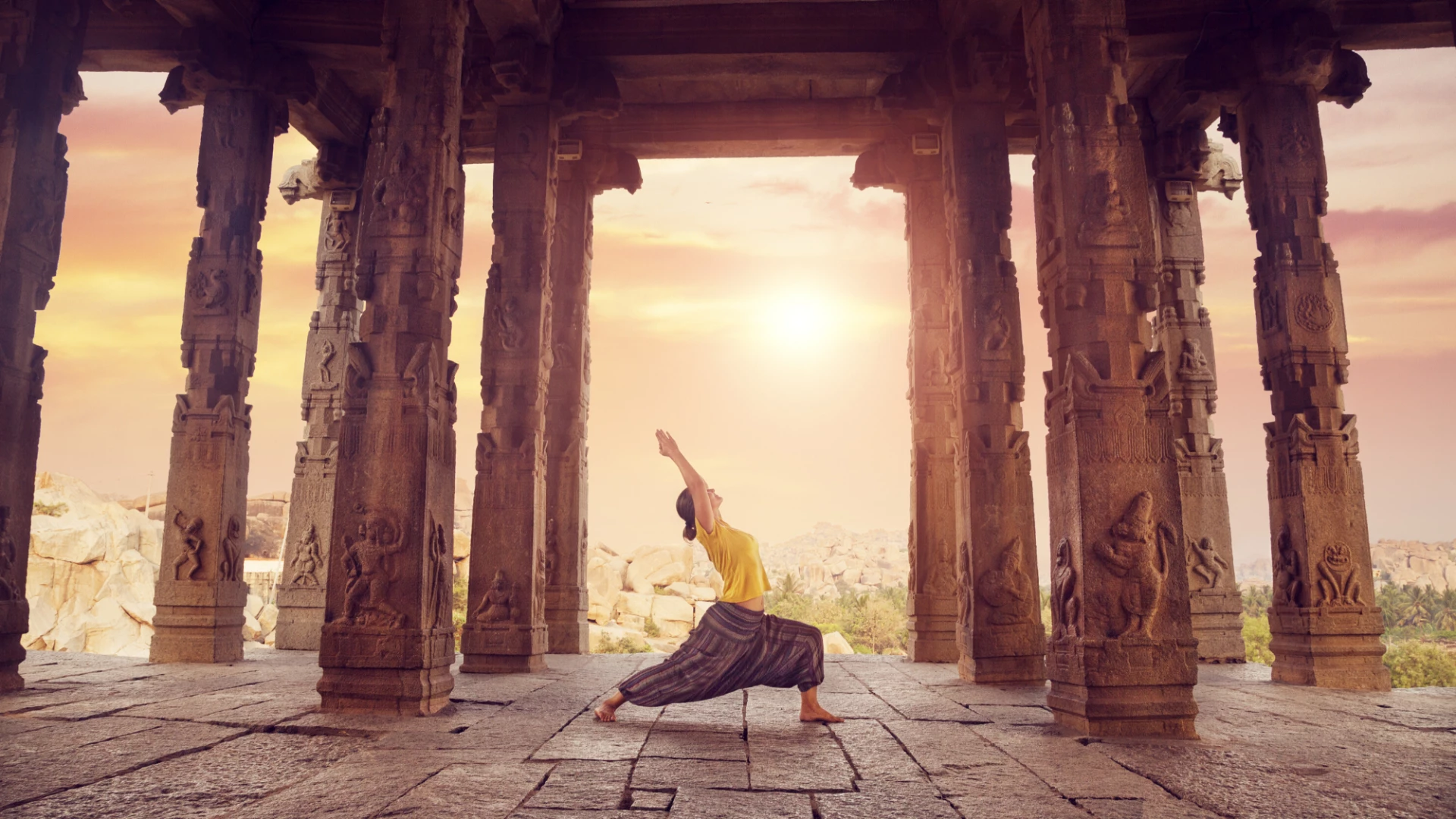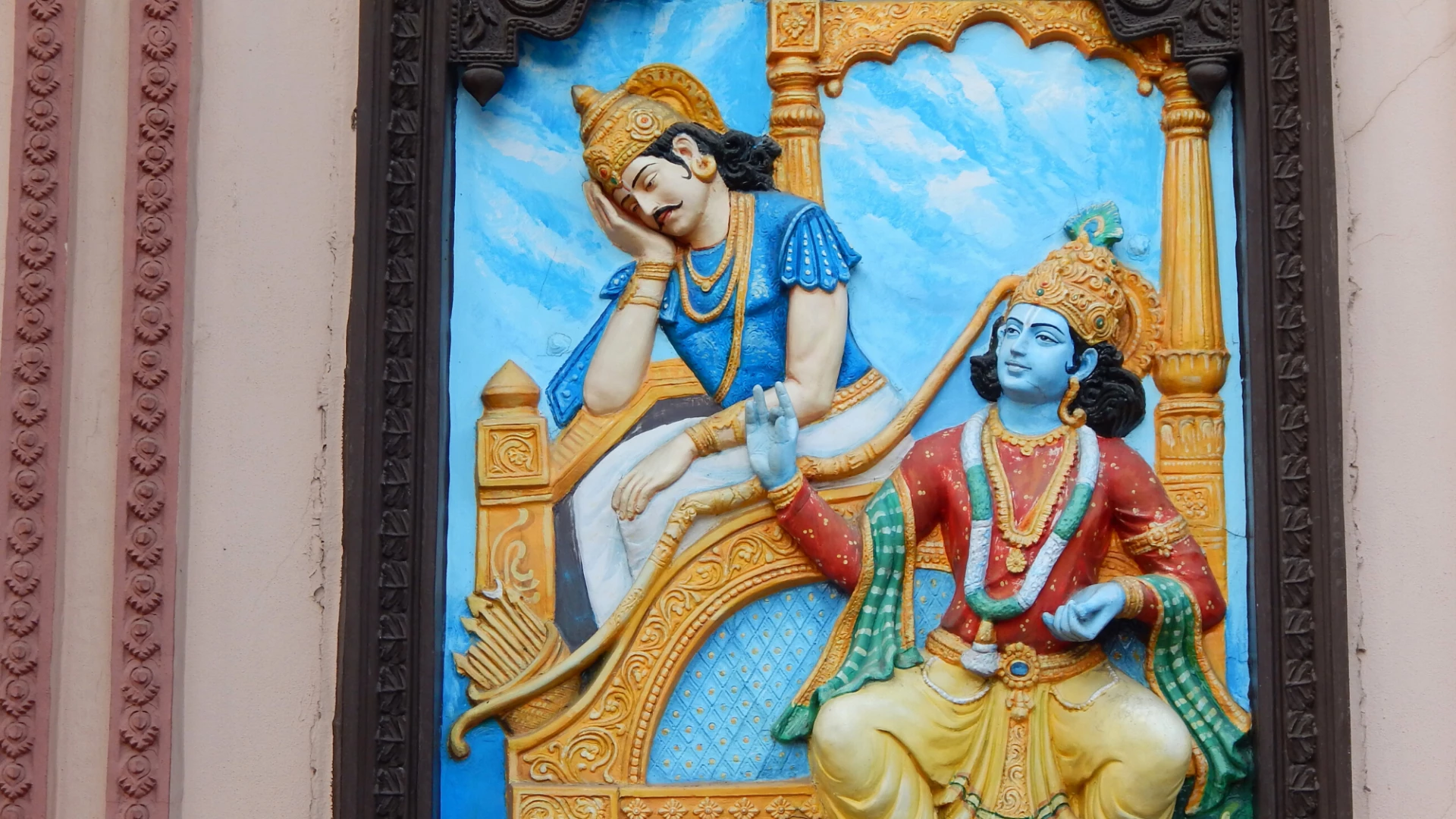Arjuna is Us: The Yoga of Social Activism

“Of the numerous Sanskrit works on Yoga, two scriptures have become favorites of dedicated students of Yoga—the Yoga-Sutra, attributed to Patanjali and the Bhagavad-Gita ascribed to Vyasa. These can be considered foundational Yoga texts. While the former work addresses ascetics primarily, the latter is a gospel mainly for the grihastha-yogin, the spiritual practitioner who is a householder with a busy family life.” —Georg Feuerstein, from The Bhagavad Gita: A New Translation
Although it is prevalent in the West to hear yoga teachers talk about the eight-fold path outlined in the Yoga Sutras as being the yoga path we should all be following, this is misleading. I’m not saying that the Yoga Sutras has no value for us—in fact, I think it contains powerful wisdom we can use in our everyday lives. But after an in-depth study of the Yoga Sutras, which entailed a close reading of the book The Yoga Sutras of Patanjali by Edwin Bryant, along with regular discussions with a good friend who was also reading it, I concluded that the eight-fold path is not one that we householders can follow in a literal way.
First of all, we would have to become renunciates (or ascetics, as Feuerstein says above) because even being attached to people you love, including your family, interferes with your ability to achieve samadhi (liberation). And the path—with its intended goal of liberation from everyday life as we know it—is quite arduous and severe as we would eventually have to let go of all connection to external reality.
Yoga for the Householder
That is why I have recently decided to embark on an in-depth study of the Bhagavad Gita. I wanted to learn more about the yoga path that is for, as Feuerstein says, householders (grihastha-yogin), people with livelihoods, families, and communities who have important work to do in the world.
Arjuna, who is the focus of the Bhagavad Gita and to whom the god-man Krishna reveals the wisdom of yoga, is himself very much a householder. He is married to several women and has children and a large extended family he cares about. His profession is that of a warrior (he is the son of Indra, the great warrior deity), and he has fought many battles in the past.
The Battle is the Path
The battle that he is about to enter at the start of the Bhagavad Gita is a war that Arjuna believes in; he is fighting for his family to win back the kingdom that was stolen from them so that his brother Yudhishthira can take his rightful place on the throne. So Arjuna is very much engaged with the world.

As many of you probably know, the entire book takes place when Arjuna falls into a state of despair before entering the battle to win back the kingdom because he sees that some of his relatives and respected teachers are fighting on the other side. He feels he cannot bear the thought that he might kill some of them.
But it’s important to understand that Arjuna is not against war per se. He is a warrior who has fought many battles in the past and will go on to fight more battles after the one in the Bhagavad Gita. So at this moment, he has not suddenly become anti-war, but instead, he is just afraid about the collateral damage that this particular battle might cause.
When Arjuna confesses all this to his friend and advisor, the god-man Krishna, Krishna urges Arjuna not to withdraw from the battle but to enter into it as part of his yogic path. Had Krishna been advising Arjuna to follow the eight-fold path as outlined in the Yoga Sutras, he would have told Arjuna to withdraw from the battle, to live in the woods, free himself from all worldly ties, and spend all his time meditating.
Instead, he tells Arjuna, the householder, to stay engaged and fight for what he believes is right. And he then advises Arjuna how to do this “work” with equanimity by practicing “yoga in action” rather than being tormented by his fears of the possible results of his actions. This is the reason that Mohandas K. Gandhi called the Bhagavad Gita his “mother” and used its wisdom to do his work—his dangerous fight for the liberation of India—with equanimity.
Arjuna is Us
So that’s why I believe Arjuna is us. For we are not only householders as he is, but also, like him, we all have battles to fight. Whether you are a social activist, who, like Gandhi, is fighting for the rights of marginalized people or you have chosen to engage with the world in other ways, all of us, like Arjuna, must at times search for the courage to do what is right. And like him, when we do stand up for what is right, we risk loss and collateral damage.
Sometimes there may even be people—good people—on the other side, that we will risk hurting in some way. The Bhagavad Gita can teach us how to stay strong. As Georg Feuerstein says:
“We live in a time of great social and environmental upheaval, and the wisdom teachings of Krishna have, I propose, much to offer us all. Krishna imparted his activist Yoga to his disciple, Prince Arjuna, while he was poised on the battlefield, facing the immediate prospect of killing relatives and honored teachers who, for various reasons, had gathered on the enemy’s side. Naturally, Arjuna found himself in a significant personal quandary—a struggle between right and wrong that is symbolic of all life’s great predicaments. Today, our battlefield is global, and what is at stake is the survival of our species and all higher life forms on planet Earth. We also are called to fight for the dignity and sustainability of the vast “underprivileged” section of the human population and the mental-emotional sanity of those who live in relative abundance.” — from The Bhagavad Gita: A New Translation
Reprinted with permission from the Accessible Yoga Blog.
 Nina Zolotow is Editor-in-Chief of the Accessible Yoga blog. Formerly, the Editor-in-Chief of the Yoga for Healthy Aging blog, Nina is a yoga writer as well as a certified yoga teacher and a long-time yoga practitioner. She is the co-author with Baxter Bell of Yoga for Healthy Aging: A Guide to Lifelong Well-Being and co-author with Rodney Yee of Yoga: The Poetry of the Body (with its companion 50 Card Practice Deck) and Moving Toward Balance. She is also the author of numerous articles on yoga and alternative medicine.
Nina Zolotow is Editor-in-Chief of the Accessible Yoga blog. Formerly, the Editor-in-Chief of the Yoga for Healthy Aging blog, Nina is a yoga writer as well as a certified yoga teacher and a long-time yoga practitioner. She is the co-author with Baxter Bell of Yoga for Healthy Aging: A Guide to Lifelong Well-Being and co-author with Rodney Yee of Yoga: The Poetry of the Body (with its companion 50 Card Practice Deck) and Moving Toward Balance. She is also the author of numerous articles on yoga and alternative medicine.




